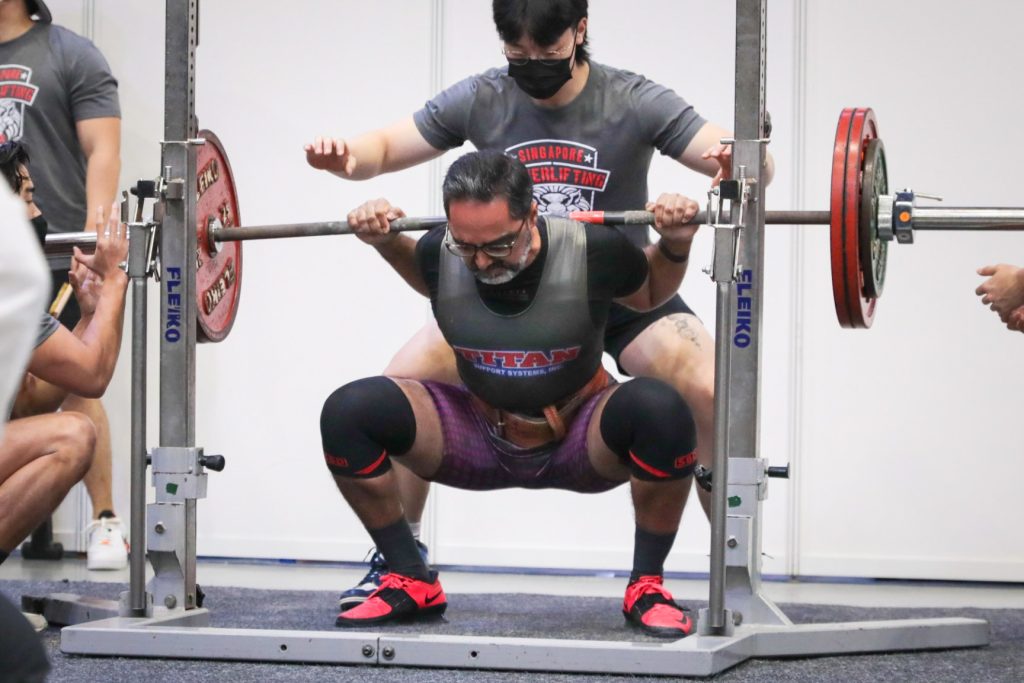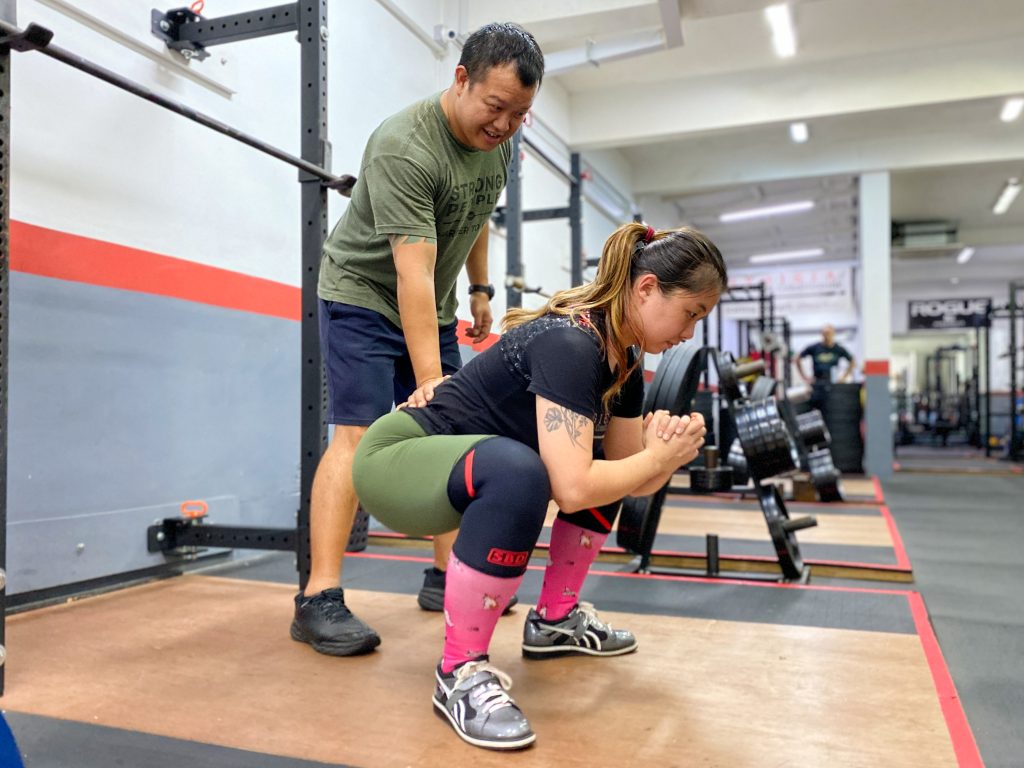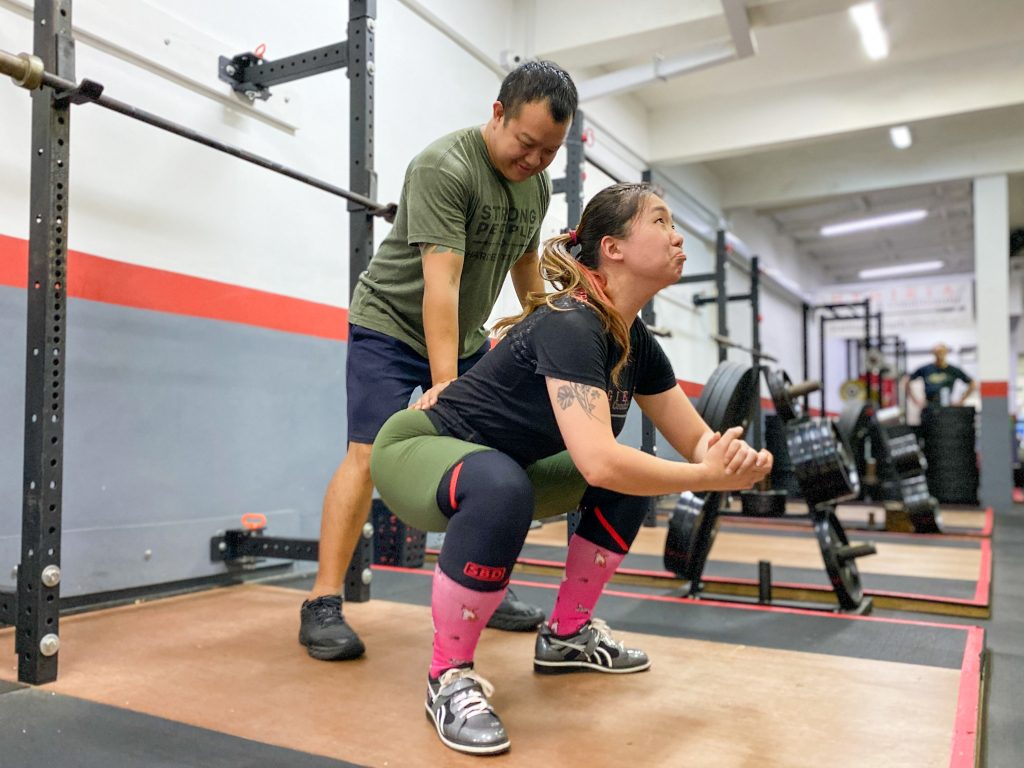
When you squat, where should you be looking at? Up, straight, or down?
Up seems to make sense, right? When you’re driving a car, you look in the direction you’re going to turn. Your body will follow where your eyes look. So in a squat, it seems quite natural to look up when you’re trying to stand back up. After all, you gotta look up to go up, right?
Well, no.
Look down, not up
Just to clarify, when we’re talking about the squat in this article, we’re referring to the low bar back squat. Why the low bar back squat instead of the other squat variants? The benefits of using the low bar back squat in strength training have been discussed ad nauseam and outside the scope of this article. If you’re interested to find out more about it, I’d highly recommend this book.
Now, back to where to look during the squat.
So, where should you look? Instead of looking up or straight ahead, you should look 1 – 1.5m on the floor in front of you. Here’s why.
You’ll use your hip drive more efficiently
The chest follows the eyes. When you look up while standing back up from the bottom of the squat, your chest lifts, pulling your knees and hips forward and killing the hip drive (which is one of the most important things in the squat). If you’re not sure what hip drive is, you can find more information here.
Now that you have an idea of what hip drive is, watch some videos of lifters doing heavy squats. It doesn’t matter which squat variation they use. It could be a high bar squat, front squat, or an overhead squat. When the weight on the bar gets heavy for the lifter, their hips always lead out of the bottom position. And when their chest starts to lift after the hips lead out, you’ll notice that the bar speed slows down.
Try this out for yourself. Take the bottom position of the squat – place your feet about shoulder width apart, toes pointed out about 30 degrees. Put your hands together and squat down till your hip crease is just below the top of your patella. Now push your knees out with your elbows so that your knees are parallel to your feet. Now, get your training buddy to place their hand on your lower back and provide some resistance by pushing straight down.

Tuck your chin slightly and look at the floor 1 – 1.5 m in front of you. Then drive your hips up out of the bottom against the downward resistance of your buddy while maintaining your floor focal point.
Now let’s repeat the movement, but this time look up at the ceiling instead. Does it feel different? You’ll almost certainly feel that it requires much more effort to push up against the resistance and you may even lose a bit of balance.

With an eyes-up position, your chest will have the tendency to lift, and that in turn causes your knees and hips to move forward, which kills the hip drive.
Every time we teach the squat, we do this little activity so that new lifters can experience the difference for themselves. And every single time, they realise that looking down feels stronger and makes for a more stable squat.
Before we move on, I want you to be aware that one can look “too down”. Looking down while squatting isn’t a case of “if it’s worth doing, it’s worth overdoing” kind of a deal – looking “more down” doesn’t mean it’s better. Occasionally, we’d get lifters locking their gaze at a spot that’s way too close – some to the point whereby they’re looking between their feet,
Like looking up, looking “too down” can cause issues as well – the lifter’s neck and/or thoracic spine has the tendency to go into flexion and also increases the probability of their back angle being too horizontal while squatting.
You’ll maintain better balance
Throughout any range of movement, your body naturally tries to stay in balance. This means keeping your center of gravity directly over your base of support.
To fix your gaze on a focal point while squatting, a more accessible and manageable focal point is closer to the body, on the nearby floor, rather than a faraway wall or ceiling.
Let’s try this out. Stand with your feet about hip width apart, and stare at a point on the ground about 1m or so away. While keeping your gaze fixed on the point, lift one leg and stay balanced on the other.
Repeat this little activity but this time, fix your gaze on the ceiling. Did you wobble just a bit? Most people will find it harder to balance while looking up.
Having your eyes fixed on the floor close to you gives you proprioceptive feedback for your body’s position, which helps you better stay in balance, which in turn helps you to more effectively squat a heavy barbell.
Making sure that you look down
We’ve now established that you should look down while squatting. But how do you ensure that it happens all the time, especially when looking up tends to be a reflex action when getting back up from the bottom of a squat, even more so when the weight gets heavy?
Here are some tips :
– Find something to focus on. It could be finding a little mark on the floor or placing your water bottle on the floor in front of you. Sometimes, we stick a piece of tape on the floor or wall for our lifters to give them something to focus on. The idea is to give yourself something to lock your eyes on instead of staring at a general area.
– Eyes and head should face the same direction. Pay attention to your head – it should be facing the same general direction as your eye gaze. You don’t want your eyes looking down but your head tilting up. If you have the tendency to kick your head up, imagine that you’re holding a tennis ball between your chin and chest.
– Video yourself. If you’re not sure if you’ve managed to maintain position, take a video of yourself squatting. Video will give you objective evidence of what you’re actually doing.
Make looking down a habit
If you have the habit of setting your eye gaze anywhere but down, give looking down a shot. Even if you’re not familiar with the hip drive and can’t feel the difference it makes, I’m pretty sure you’ll feel the benefit of being more stable and having better balance.

